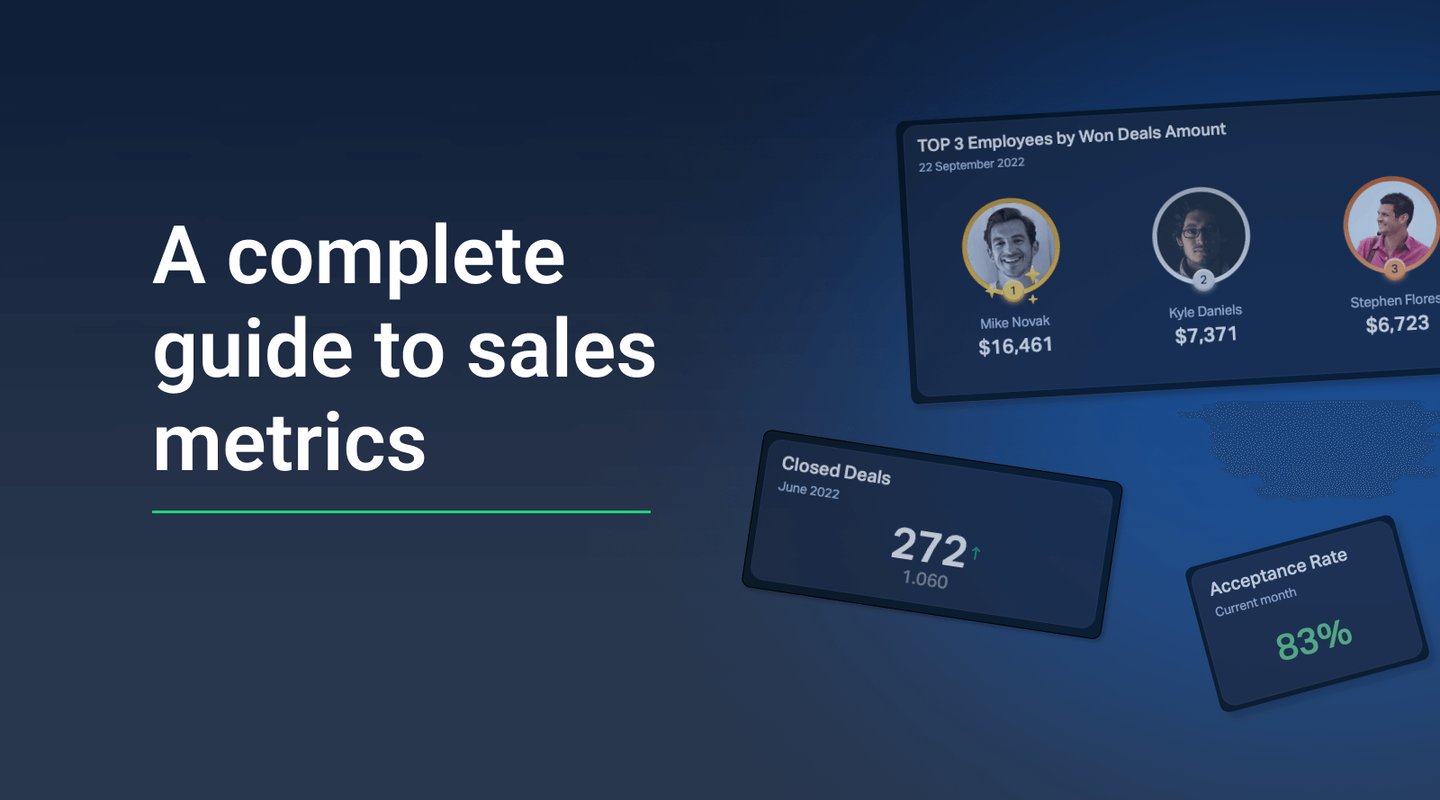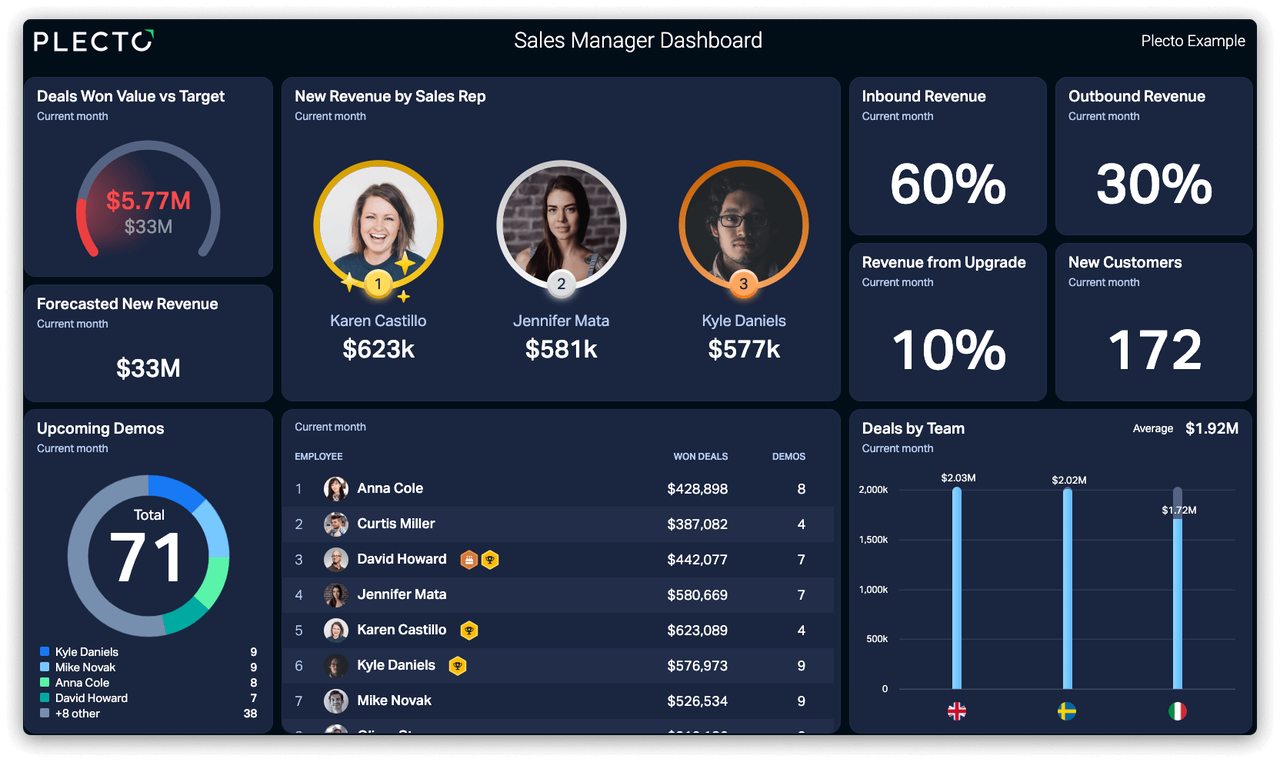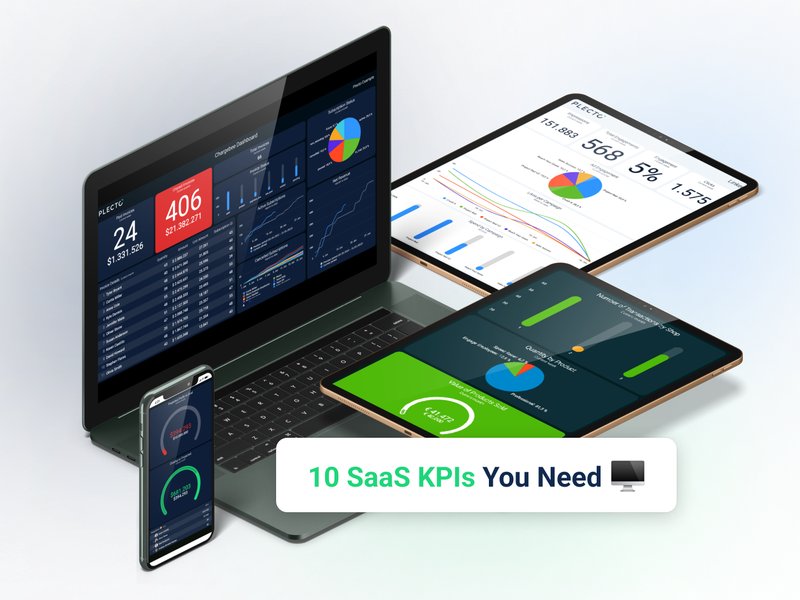Sales are the lifeblood of all companies. Without revenue, there’s no business – so it should be no surprise that sales metrics are some of the most-tracked performance indicators across industries.
This article will give you a crash course in sales metrics by explaining what sales performance metrics are and how to track them. It also explores the most important metrics for sales performance while suggesting some sales metrics examples to help get you started on the path to a more data-driven approach to sales.
What are sales metrics?
Most of the data collected in your company’s CRM system can be considered “sales metrics.” The term generally refers to a variety of data points that can be used to track overall sales performance and the performance of individual reps.
Companies that track metrics for sales performance have the most accurate picture of their pipeline health, revenue drivers, and whether they’re focusing on the right sales-related activities. Tracking the right metrics can tell you things like whether you should be focusing on inbound sales or outbound sales – or whether your sales strategy could use some work.
Mission-critical metrics that are essential to hitting your sales targets are often measured using “key performance indicators” (KPIs). Check out this article to learn the difference between metrics and KPIs.
Sales Metrics Examples
To use sales metrics to their fullest potential, it’s important to track a variety of metrics covering the entire sales cycle – a mix of sales activity and performance metrics combined with some customer service metrics is an excellent place to start. Nothing happens in a vacuum, so it’s imperative to understand the “why” as well as the “what.”
Let’s say that one of your sales KPIs is to increase revenue by 25% over the next quarter. If you were to track sales performance metrics in this scenario, you’d want to track the specific actions that should lead to the 25% increase: These might include metrics for:
- New leads generated
- Outbound calls made
- Emails sent
- Demos booked/given
- Offers sent
Tracking metrics like these can help you better understand which actions are moving your department closer to its KPIs – and which ones might not be worth the effort.
Looking into customer churn and retention rates, which also affect revenue, could highlight customer service gaps that are impacting the company’s bottom line. More than half of customers say they’d stop doing business with a company after one bad experience – and many are willing to pay up to 30% more for a better customer experience. Check out this article to learn about the biggest customer service trends of 2022.
To help you get started with some sales metrics examples, this article outlines a broad range of the 21 most important sales KPIs companies should be tracking to ensure success. If your company uses a mix of inbound and outbound sales, check out this article to learn the10 most important inbound sales KPIs to track – or this one to get a handle on 10 essential outbound sales KPIs that can help guarantee success.
If you’re struggling to retain customers, check out these 10 tips for how to improve customer retention or these 15 customer service KPIs to see where you might be falling short of your customers’ expectations.
Build your first dashboard.
Start your 14-day free trial today
How to Track Metrics for Sales Performance
In sales, KPIs are used to measure and monitor progress toward sales targets. Some examples of commonly tracked sales KPIs include sales growth, recurring revenue, new business revenue, and projected pipeline value. Effectively tracking metrics for sales performance takes the guesswork out of identifying where sales teams are working most effectively – and where they’re coming up short.
When you actively track sales performance metrics, you’re proactively tracking the actual effects of specific business activities or processes. The best way to get started is to choose a handful of KPIs that are critical to your sales goals over the next year. A good initial target is 2–5 KPIs per goal. After you’ve chosen your KPIs, choose a few significant and actionable sales performance metrics that will be instrumental in moving your company toward those goals.
While KPIs are always tied to a desired outcome, metrics tracking measures the everyday performance of the strategic actions you’ve defined to move you closer to your goals – or KPIs.
Remember to be crisp on which metrics you’re tracking and why. Tracking too many metrics is labor-intensive and can lead to data fatigue, confusion, and the opposite of what you were hoping to achieve.
Track Metrics and KPIs Centrally Using Reports and Dashboards
If you’d like to take a more data-driven approach to sales, tracking a handful of the right KPIs and related sales metrics is an excellent place to start.
With Plecto, you can schedule and generate automatic reports including custom KPIs using real-time data to help you keep on top of the metrics that should be propelling you toward your sales goals.
Plecto’s interactive real-time dashboards make it easy to track KPIs and their related metrics. Creating personal KPI dashboards for each sales rep can increase motivation while helping management keep tabs on how the sales team is performing. To find out more, check out our blog post about the benefits of using dashboards for your business.
Start tracking your sales metrics today by signing up for a free 14-day trial of Plecto!




